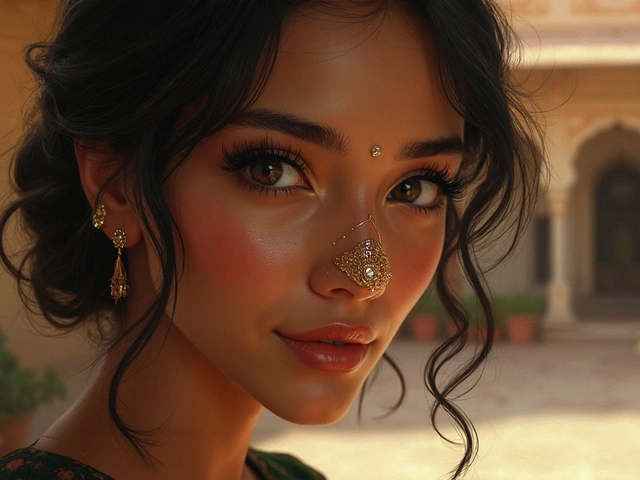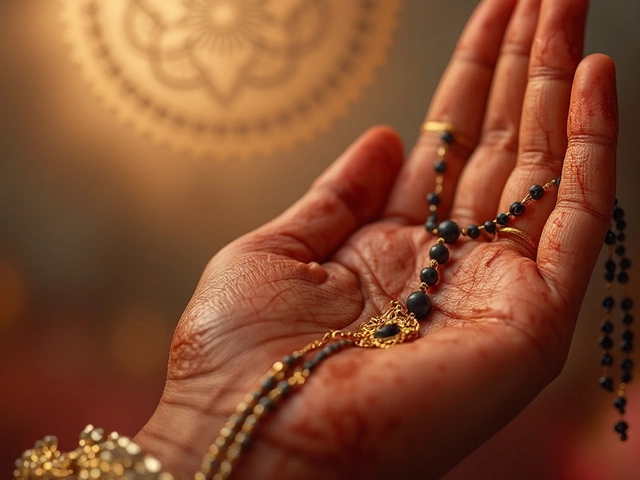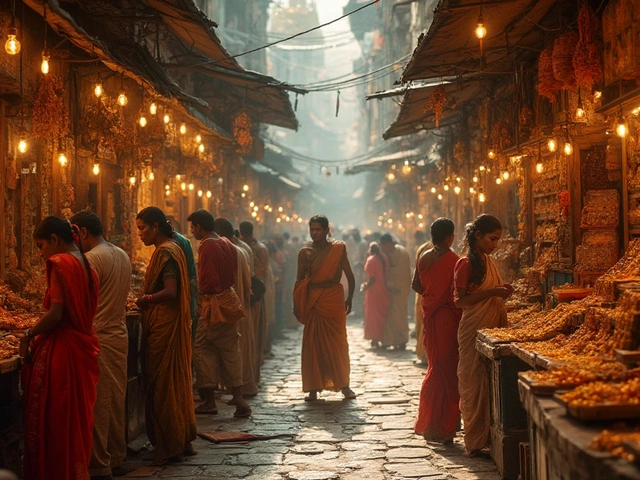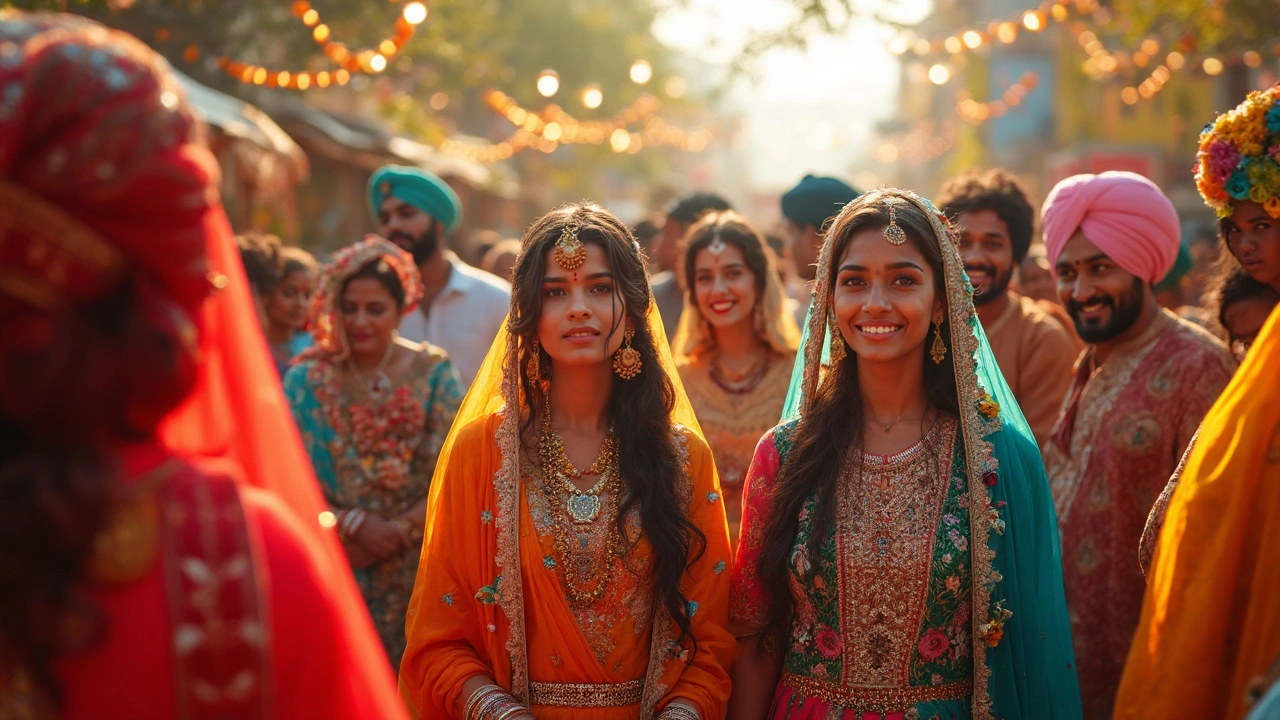
If you ask someone in India what a Punjabi dress is, you'll probably hear the words 'salwar kameez' right away. This combo—loose pants (salwar) paired with a tunic top (kameez)—is classic and goes beyond Punjab. It’s comfy, practical, and looks great on everyone. People sometimes call it a ‘Punjabi suit,’ especially if it comes with a colorful scarf or dupatta.
The funny thing is, while the salwar kameez is Punjab’s signature style, you’ll spot it everywhere: weddings, college campuses, even airport lounges! It’s not just for women either—men’s versions exist, but with a slightly different twist.
If you’ve only seen these at Indian parties or movies, you might wonder why the fuss. The big deal is, Punjabi suits are super flexible. Want something fancier for a festival? Pick one with shiny embroidery. Need something cool for summer? Go with a light cotton version. The styles and designs constantly change, but comfort always comes first.
- Breaking Down the Punjabi Dress
- Fabrics, Patterns, and Embellishments
- How to Pick the Right Punjabi Outfit
- Tips to Accessorize the Punjabi Way
- Modern Punjabi Dress: Trends and Twists
Breaking Down the Punjabi Dress
Ask anyone in North India what a Punjabi dress is, and most will point you straight to the Punjabi dress known as the salwar kameez. But it’s not just about two pieces of clothing thrown together. There’s a system to how it’s put together, each part has its own job, and it comes loaded with years of tradition.
The salwar is basically the bottom half—it’s a pair of baggy pants that’s roomy at the thighs and tapers at the ankles. This design makes it super comfortable, which explains why women of all ages feel at home in it. The kameez, meanwhile, is the tunic or top. These two are usually topped with a dupatta, which is a long, flowy scarf draped around the shoulders or neck.
Here’s a quick breakdown of the main pieces:
- Salwar: Loose at the top, narrow at the ankle. Sometimes swapped for 'churidar' or 'patiala' styles for a different fit.
- Kameez: The upper garment—can be short or long, skinny or wide, simple or blingy.
- Dupatta: A scarf that completes the look. It can be plain, or dressed up with embroidery or mirror work.
You’ll spot Punjabi suits just about everywhere—from gurdwaras to city malls. There are even famous versions like the 'Patiala suit' where the salwar is extra pleated, making it puffier and giving it more character. In Bollywood movies, the heroine wearing a bright Patiala suit is almost a cliché but in the best way possible.
| Punjabi Dress Component | Basic Description | Popular Variations |
|---|---|---|
| Salwar | Roomy pants, tight at ankles | Patiala, Churidar, Straight-cut |
| Kameez | Tunic, variable length and cut | Anarkali (flared), Straight-cut, Short |
| Dupatta | Long scarf, mainly for style or tradition | Embroidered, Printed, Net, Chiffon |
Punjabi dress isn’t limited to one age group or gender, though. Even young girls rock playful prints, and guys get into the act during festivals with their own version called kurta-pajama or kurta-salwar. It all adds up to a look that’s both traditional and forever in style.
Fabrics, Patterns, and Embellishments
The strong appeal of a Punjabi dress comes down to its fabric, patterns, and the way it’s decorated. The main material for a classic salwar kameez used to be pure cotton—breathable and perfect for those sticky North Indian summers. These days, you’ll find all sorts of fabrics: silk for weddings, georgette for casual hangs, even stretchy lycra for those who hate ironing.
Patterns on a Punjabi dress can be as basic as plain blue or as bold as a giant floral print. Phulkari, the region’s famous hand-embroidery, literally means 'flower work' and shows up on so many festival outfits. You’ll also spot bagh (a dense type of embroidery), chikankari, and sometimes even machine prints that look just as lively. It’s not rare to walk into a bazaar and get lost in a rainbow mix of block prints, mirror work, or stripes.
What really sets these outfits apart are the embellishments. Traditional Punjabi suits often feature gota patti (little bits of gold or silver ribbon), sequins, beads, or zari—that’s metallic thread. These touches turn a simple suit into something party-ready. If you’re into something a bit more practical for work or daily errands, stick with lighter prints and skip the bling.
Pooran Singh, a well-known Punjabi textile dealer, once said, "No two Punjabi suits are the same—the handiwork tells the story of the person who made it."
Here’s a quick guide on popular fabrics used:
| Fabric | When to Wear | Special Features |
|---|---|---|
| Cotton | Daily, Summer | Breathable, easy to wash |
| Silk | Weddings, Festivals | Luxurious, glossy finish |
| Georgette | Casual Outings | Flowy, less wrinkling |
| Lycra | Work, Everyday | Stretchy, low maintenance |
For anyone looking at buying a Punjabi dress, the best trick is to pick your fabric first based on when and where you’ll wear it. The design and add-ons, like work at the neck or sleeves, should match your own style and comfort. Trust me, you don’t want heavy sequins getting in the way on a hot day!
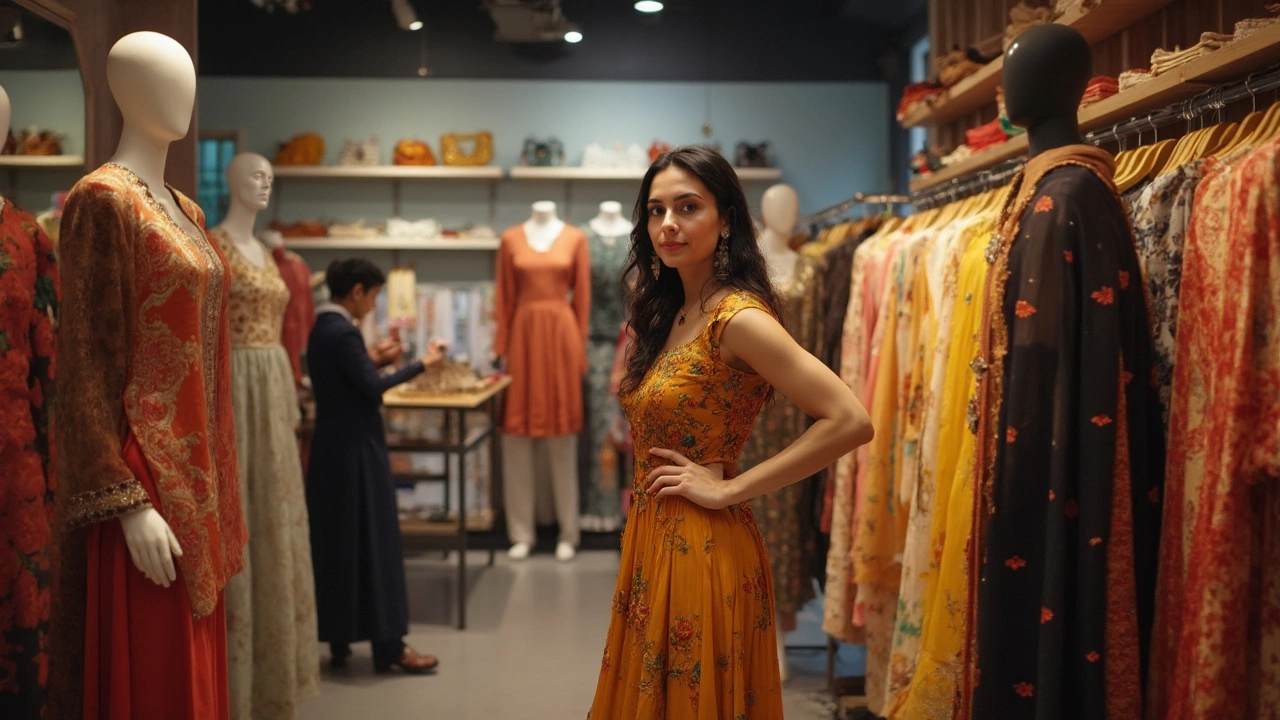
How to Pick the Right Punjabi Outfit
Shopping for a Punjabi dress can get confusing, especially with all the colors, patterns, and cuts out there. But if you know what to look for, you’ll end up with something that not just looks good but also feels right for your needs.
First, think about the occasion. For a big event like a wedding or festival, it’s totally normal to go bold—think heavy embroidery, mirror work, silk or velvet fabrics, and extra-flared pants. Everyday wear calls for simple cotton or linen suits with light prints or basic embroidery. Schools and offices often stick to straight-cut kameez and solid colors—nothing too flashy.
Fit matters, too. A well-fitted kameez will fall just below the knees, with the salwar loose but not baggy. Some prefer the trendy churidar (like leggings) instead of the typical salwar for a sleeker look. For tall folks, long, straight-cut kameez styles usually work best, and shorter people might look for anarkali cuts with a high waist to give the illusion of height.
Fabric is key—no one likes sweating through a polyester suit in the July heat. Stick to cotton, mulmul, or linen for summer. Winter brings out the warm stuff: silk blends, pashmina, and wool. For monsoons, many opt for synthetics or blends that dry faster and resist stains.
- Pick colors that match your skin’s undertone: warm undertones go well with reds, oranges, and yellows, while cool undertones suit blues, greens, and purples.
- If you’re new to Punjabi suits, try basic geometric prints or small florals to start. Large, bold prints can overwhelm a frame unless you like making a statement.
- Always check the care instructions if you’re shopping for something with heavy work—some fancier suits need dry cleaning only.
- If you’re buying for a child or teen, look for adjustable waists and lightweight, breathable fabrics. They’ll thank you later.
Trying things on helps a lot. Sizes can be unpredictable, so don’t trust the tag. And remember, comfort trumps trends every single time.
Tips to Accessorize the Punjabi Way
If you want your Punjabi dress to pop for any occasion, nailing the accessories is half the fun. The right details turn an everyday look into something worth remembering.
Let’s get specific on what works and why:
- Juttis or Mojaris: These are the flat, slip-on shoes everyone calls juttis in Punjab. They’re hand-stitched, come with beads or threadwork, and somehow go with both jeans and the full Punjabi suit. For parties, flashy embroidered pairs are the way to go.
- Phulkari Dupatta: A true Punjabi look isn’t complete without a dupatta. If you want tradition, grab a phulkari—this is a scarf loaded with bright floral embroidery, each stitch telling a story. Younger folks often use the dupatta more as a style statement than a head covering.
- Chooda and Bangles: Stack up glass bangles or metal kadas. Red and ivory chooda is a must for Punjabi brides, but on regular days, even mixing two colors is enough for a cheerful vibe.
- Maang Tikka: This forehead ornament sounds heavy but comes in all sizes. It’s iconic at weddings and full-on celebrations but even a small one livens up a plainer outfit.
- Paranda: Girls sometimes braid in a paranda—think a long, tassel accessory into their hair—usually colored to match their outfit.
- Statement Earrings: Punjabi jhumkas (big bell earrings) or chandbalis (crescent-shaped earrings) work better than anything small or plain.
Here’s how often Punjabi folks pick these accessories, just so you know what's actually common:
| Accessory | Most Popular Use | Seen At (Events) |
|---|---|---|
| Juttis | 65% | Festivals, weddings, everyday |
| Phulkari Dupatta | 60% | Weddings, cultural fests |
| Bangles/Chooda | 70% | Weddings, family events |
| Maang Tikka | 40% | Weddings, big functions |
| Paranda | 30% | Traditional, casual youth parties |
| Jhumkas/Chandbalis | 80% | All festive events |
If you’re new to accessorizing, start small. Pick one or two to begin—maybe some shiny juttis and a bright dupatta. Once you get comfortable, you’ll be mixing bangles and earrings like it’s second nature. Just remember: Punjabi accessorizing is all about having fun with color and letting your personality show.
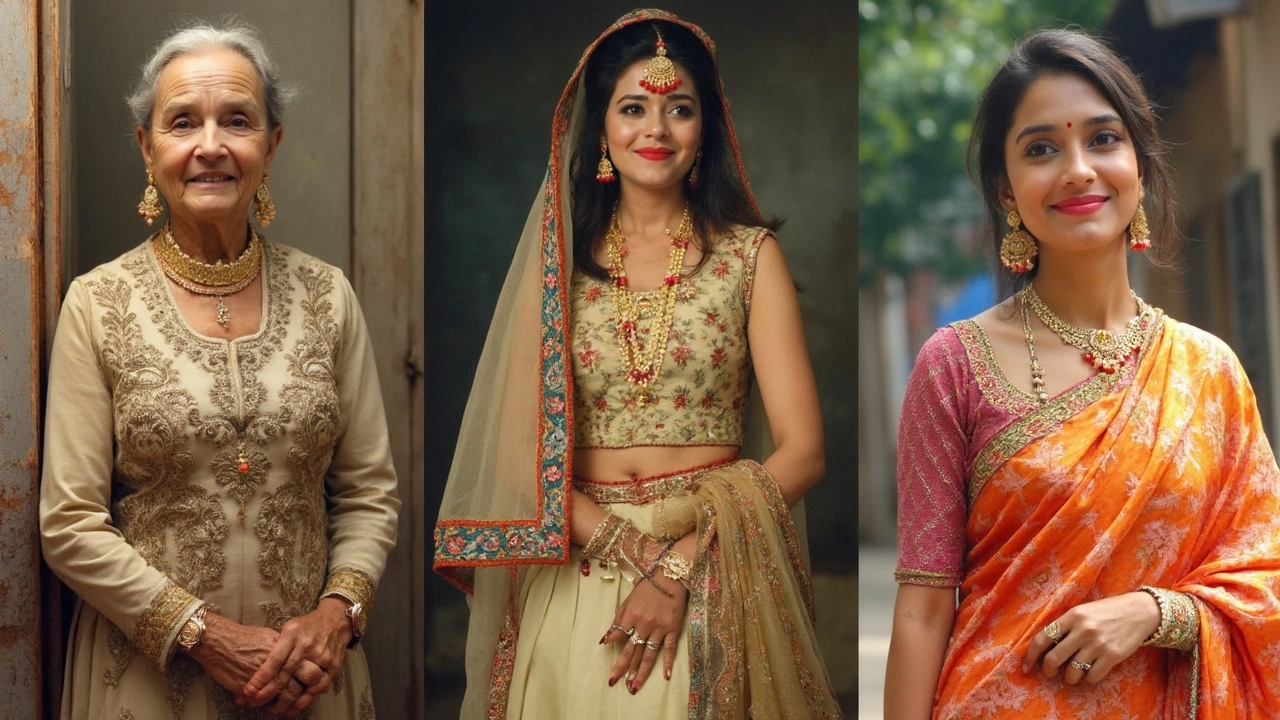
Modern Punjabi Dress: Trends and Twists
Traditional Punjabi suits aren’t just stuck in the past. Over the past decade, designers have pushed boundaries and challenged what a Punjabi dress should look like. Today, you’ll see a mix of classic touches and global trends—think high-low hemlines, bold digital prints, and playful cuts that weren’t around a generation ago.
Young folks are pairing kameez tops with jeans instead of salwars, making the look easy for college or a coffee run. Meanwhile, palazzo pants and short kameez combos are big in urban areas. Even guys have ditched the plain kurta for trendier, fitted jackets and asymmetrical hemlines.
One massive game-changer? Fabrics. Light georgettes, organza, and linen are all the rage, especially during Punjab’s skin-melting summers. New embroidery work like mirror, gotta patti, and thread patterns keep the outfits fresh. Ditching heavy dupattas for shorter, stylish versions also helps with comfort and movement.
Here’s a snapshot of what’s trending (data from a popular 2024 online Indian fashion survey):
| Style | % of online orders (2024) |
|---|---|
| Classic Salwar Kameez | 37% |
| Palazzo Kameez Set | 24% |
| Short Kurti with Jeans/Leggings | 19% |
| Sharara Suit | 11% |
| Indo-Western Fusion | 9% |
Accessories have gotten a reboot too. Instead of only chunky bangles, women now go for minimal earrings, casual juttis, or trendy sling bags. Men often pick colorful turbans or sleek loafers to add some edge.
- Pick breathable fabrics for daily wear—especially if you live anywhere remotely warm.
- If you want to stand out, go for digital prints or asymmetrical designs.
- Always check for practical pockets; yes, some modern kameez actually offer them!
The bottom line: you don’t have to give up comfort to try modern Punjabi styles. Whether you go for the full traditional look or mix up pieces (like my wife Maya sometimes does with a crop top and dupatta), there are no rules—just possibilities.
